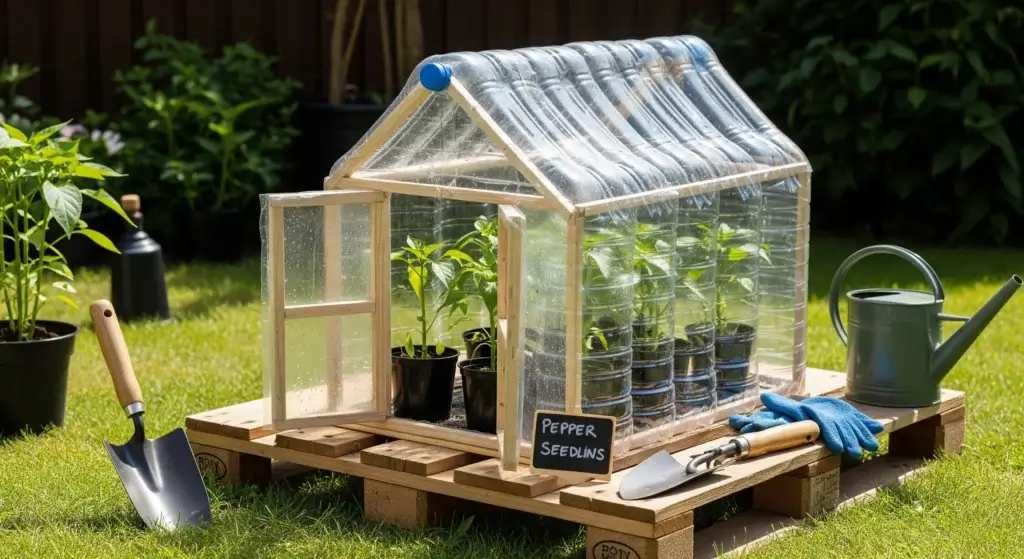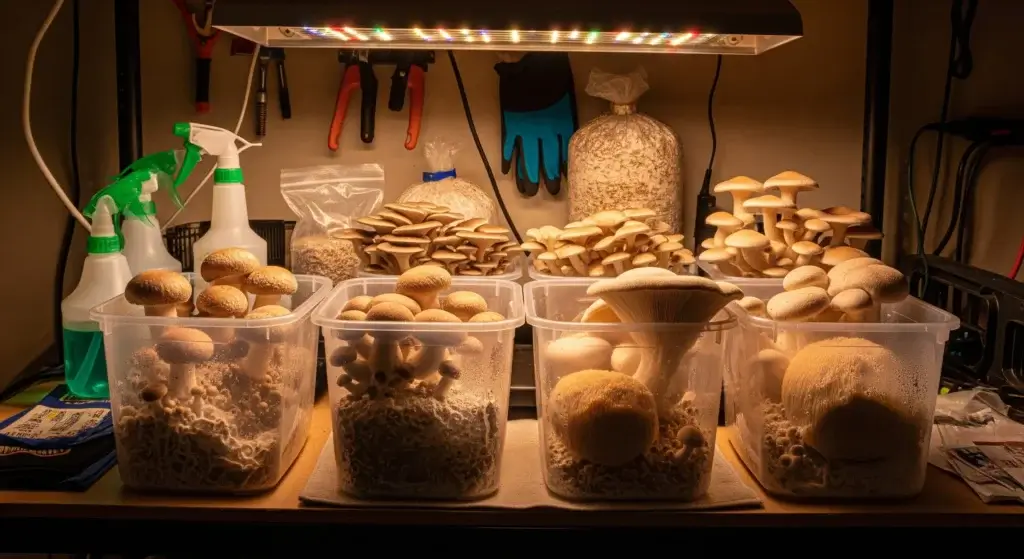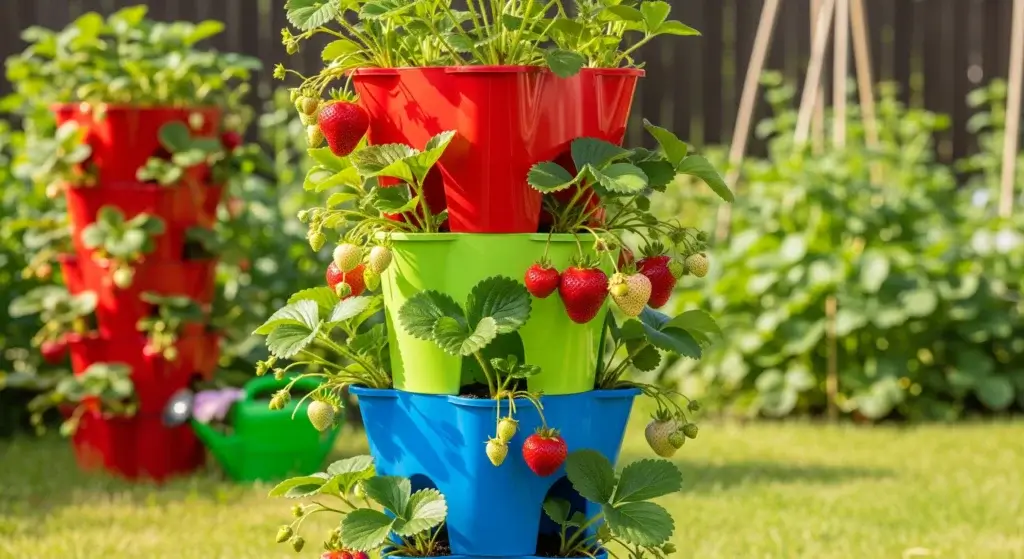
Potatoes are not only delicious and versatile but also remarkably easy to grow.
In this article, we will guide you through the process of building a DIY potato planter box, providing step-by-step instructions, tips on choosing the right soil mix, and outlining the benefits of using a potato planter box.
Our aim is to help you maximize your potato crop yield and make the most of your gardening space.
Planning Your Potato Planter Box
When planning your potato planter box, it’s essential to consider the different sizes available.
The size of your planter box will depend on the space you have available and the quantity of potatoes you wish to grow.
Larger planter boxes allow for a greater yield, while smaller ones are ideal for limited spaces.
- Read also: A Step-by-Step Guide to Crafting Your Own DIY Plant Terrarium
- Read also: DIY Plant Pots Ideas
Consider available space
Before constructing your planter box, assess the space where it will be placed.
Measure the dimensions carefully to ensure the box fits comfortably in the designated area.
Consider factors such as accessibility and sunlight exposure when choosing the location for your planter box.
Quantity of potatoes
Determine the quantity of potatoes you plan to grow, as this will influence the size of your planter box.
If you have limited space or only require a small amount of potatoes, a smaller box may suffice.
However, for larger yields or ample space, opt for a larger planter box to accommodate more potato plants.
Maximizing yield
Larger planter boxes offer the advantage of increased yield potential. With more space for potato plants to spread out their roots, they can produce a greater quantity of potatoes.
If you have the space available and aim to harvest a substantial crop, consider constructing a larger planter box to maximize your yield.
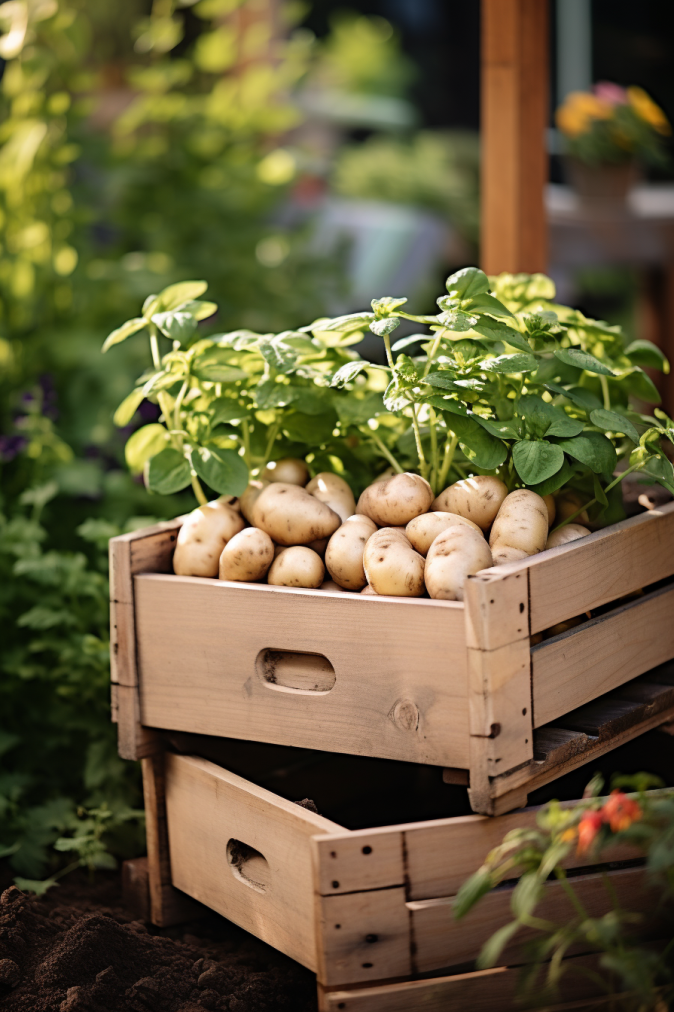
Materials Needed
Wood
- 2″ x 4″ x 144″
- 2″ x 4″ x 96″
- 2″ x 6″ x 96″
- 2″ x 6″ x 24″
- 2″ x 6″ x 21″
- 2″ x 4″ x 33″ (from the 144″ board)
- 2″ x 4″ x 24″
- 2″ x 4″ x 21″
- 2″ x 2″ x 48″ (for posts)
- 3 1/2 to 4 1/2″ wide boards, 5/8″ thick x 36″ (for side strips)
- 3/4″ x 30″ conduit
Fasteners
- 16 5″ hex lag bolts
- 2.5″ wood screws
- Exterior screws
- Wood screws
Other Tools and Equipment
- Drill
- Hammer
- Nail set/hole punch
- Circular saw
- Drill bit
- Screwdriver
Step-by-Step Instructions
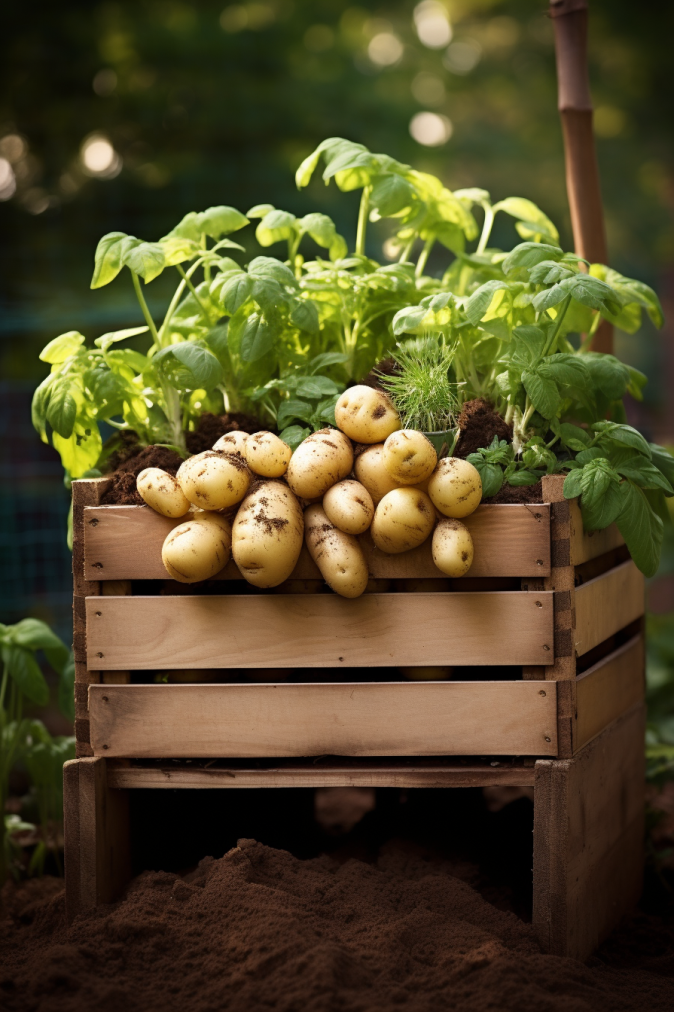
Here are step-by-step instructions to create a potato planter box, as outlined in the search results:
Gather materials
Begin by collecting the necessary materials for your planter box.
You’ll need wood, screws, and a suitable lining to prevent soil from escaping.
Choose durable and weather-resistant materials to ensure the longevity of your planter box.
The specific materials may vary based on your chosen design.
Cut wood to size
Once you have your materials, proceed to cut the wood to the appropriate sizes based on your chosen design.
For instance, you may need to cut 2″ x 4″ x 33″ pieces from a 2″ x 4″ x 144″ board, 2″ x 4″ x 24″ pieces, and 2″ x 4″ x 21″ pieces.
Precision in cutting is essential for a well-fitted and stable planter box.
Assemble the frame
Assemble the wooden pieces to create the frame of your potato planter box.
Use screws and bolts to secure the frame, ensuring it is robust enough to support the weight of the soil and growing potatoes.
A stable frame is the foundation for a successful and durable planter box.
Add lining
To prevent soil from escaping, add a suitable lining to the inside of the frame.
This can be achieved using a plastic liner or a layer of landscape fabric.
The lining helps contain the soil while allowing for proper drainage, promoting a healthy environment for your potatoes.
Fill with soil
Fill the planter box with a well-balanced soil mix that provides good drainage and aeration.
A recommended combination includes peat moss and compost.
Ensure the soil is evenly distributed and adequately covers the bottom of the planter box.
Plant potatoes
Plant your chosen seed potatoes in the soil. Space them evenly within the planter box and cover them with soil.
As the potatoes grow, periodically add more soil to the box to cover the stems.
This encourages additional tuber growth and helps maximize your potato harvest.
Water regularly
Maintain regular watering to keep the soil consistently moist, ensuring optimal conditions for potato growth.
However, be cautious not to overwater, as potatoes prefer well-drained soil.
Monitor the moisture level and adjust your watering routine accordingly to support healthy potato development.
How to Choose the Right Soil Mix for Potatoes
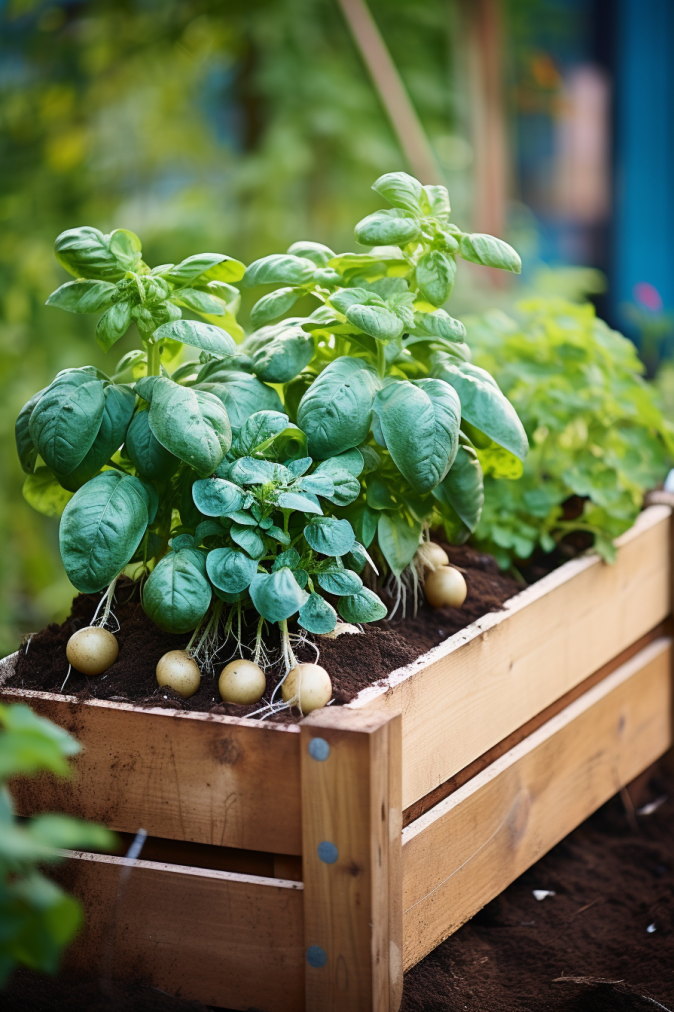
To choose the right soil mix for potatoes, it’s important to consider the following factors:
Drainage
Potatoes require well-drained soil to prevent waterlogging, which can lead to rotting.
Avoid using garden soil, which can compact easily and retain too much moisture.
Instead, use a soil mix that is specifically designed for container gardening.
Nutrients
Potatoes require a balanced mix of nutrients to grow healthily and produce a good yield.
A combination of peat moss and compost is often recommended, as it offers the necessary nutrients and structure for healthy potato growth.
Acidity
Potatoes prefer slightly acidic soil with a pH between 6 and 6.5.
If your soil is too alkaline, you can add elemental sulfur or some other acid-raising supplement to bring the pH down.
Organic material
Adding organic material to your soil mix can improve its structure and provide essential nutrients for your potatoes.
However, too much organic material can cause disease, so it’s important to strike a balance.
Fertilizer
Potatoes require a balanced fertilizer with a higher middle number (phosphorus) than the first number (nitrogen), as phosphorus is important for tuber production.
Synthetic fertilizers with a nutrient ratio of 5-10-10 are good choices.
Organic growers can instead use a combination of fish emulsion, greensand, kelp meal, and bone meal to feed their plants.
Benefits of Using a DIY Potato Planter Box
There are several benefits to using a DIY potato planter box. These include:
Space efficiency
One of the standout advantages of using a DIY potato planter box is its ability to maximize space efficiently.
Whether you have a small garden, balcony, or patio, these compact boxes provide an excellent solution for cultivating potatoes in limited areas.
High yields
Don’t be fooled by their modest size; DIY potato planter boxes are champions in delivering high yields.
The vertical growth design enables the boxes to accommodate multiple layers of soil, allowing more potatoes to flourish in a confined space.
Ease of maintenance
Maintaining and harvesting potatoes from a DIY planter box is a breeze.
The contained environment keeps potatoes neatly nestled within the box, minimizing the need for extensive digging or frequent weeding.
Protection from disease
Growing potatoes in containers offers a protective shield against soil-borne diseases, such as blight, and potential pest infestations.
The confined space of the planter box creates a controlled environment, reducing the risk of diseases that can impact potatoes when grown directly in the ground.
Flexibility
DIY potato planter boxes provide a canvas for creativity and customization.
The flexibility in design and choice of materials allows you to tailor the planter box to fit your available space and aesthetic preferences.
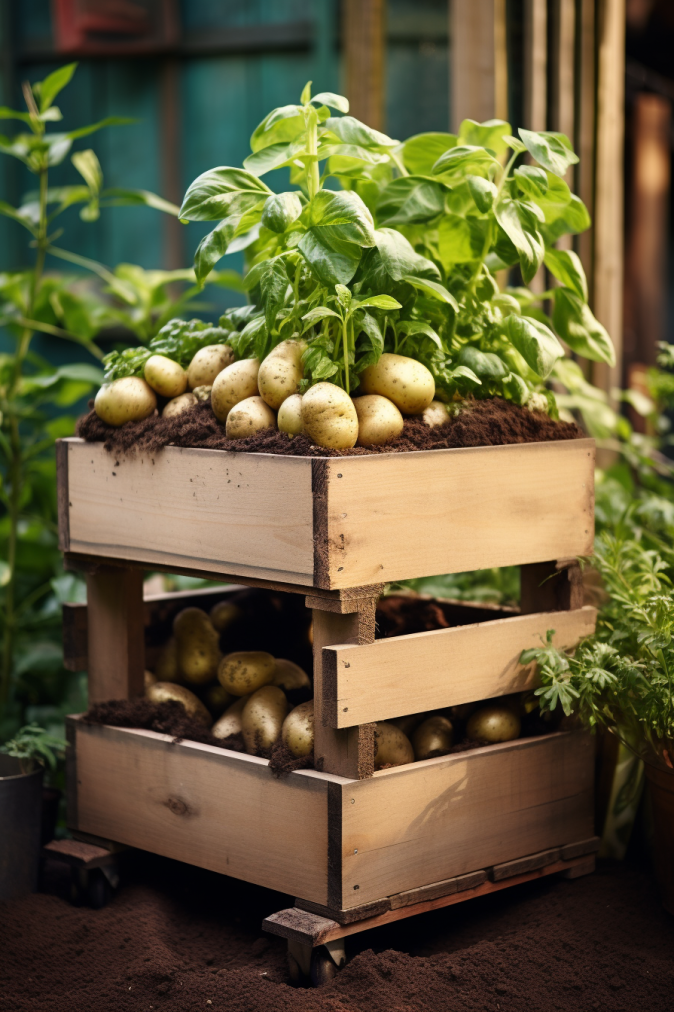
- Read also: A DIY Garden Trellis for Cucumbers Guide
- Read also: Grow Your Own Greens: DIY Alfalfa Sprouts at Home
Conclusion
The benefits of using a DIY potato planter box extend far beyond the joy of watching your potatoes grow.
From efficiently utilizing space to achieving high yields in compact boxes, the ease of maintenance, protection from diseases, and the flexibility to customize, these planter boxes offer a holistic and rewarding potato-growing experience.
So, roll up your sleeves, embrace the DIY spirit, and witness the bountiful harvest that a thoughtfully crafted potato planter box can bring to your home garden.

